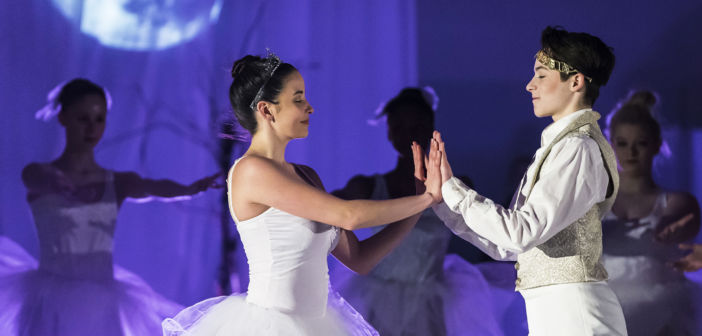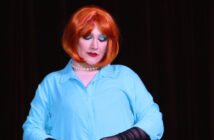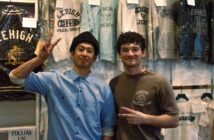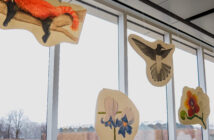Amid the bustling traffic of East Third Street, academics meet the arts.
The Lehigh Valley Charter High School for the Arts gives students the opportunity to choose one of seven artistic concentrations. It is the only public charter arts high school in the nation to offer a figure skating major.
The major was introduced to students in 2005 and has transformed in its size and intensity. It mixes athleticism with artistry and technique with performance, and it prioritizes team building over competition.
To Jiselle Bracero, a sophomore in the figure skating program, each skater functions as part of a whole.
“We all are united and we push each other to be the best that we can be, because we know that we all can do better together,” Bracero said.
Students who are interested in pursuing figure skating or any of the other artistic majors must go through an audition process. Diane LaBelle, the executive director and CEO of the charter high school, said neither grades nor behavior are considered in auditions — for those who want to skate, all that matters is the passion they bring to the ice.
“Their auditions are acts of bravery,” LaBelle said. “Many of these kids are auditioning (for one of the majors) when they are in the eighth grade, and it’s incredible to watch them come out as performers at such a young age.”
If accepted into the skating program, students spend half of each day focusing on academics and the other half at the Steel Ice Arena, which is just a 5-minute walk away.
“Once you’re here, you are always encouraged every day by your peers and instructors,” said Thom Mullins, the artistic director of figure skating.
Mullins said skaters who follow a more traditional track in the sport might fall through the cracks.
“They can get tired and burnt out and it might be the parent who is pushing them to continue, it might be a coach,” Mullins said. “It feels like they are on their own. Here, the kids become a family. They encourage each other and keep each other going in a way that’s less fragmented.”
Through an assortment of classes, students learn that much of their skill is built outside the rink.
Suzannah Nolt, a figure skating faculty member, shows students a new dimension to skating in her music, musicality and movement class.
It is in Nolt’s classroom that students work together to develop a sensitivity to music and an understanding that, just like musical notes, movements on the ice can be loud or soft, powerful or delicate.
“They learn teamwork, which you can learn in a lot of spaces, but that’s something they can take with them throughout their lives,” Nolt said. “They learn how to get along with others, they have to work very closely — not just in the confined space of the rink, but in group performances where they have to hold hands, link arms, make sure their blades don’t get caught.”
Mary Anne Hoffman, a dance and figure skating faculty member, implements ballet into the figure skating curriculum to help students build strength and poise.
“For the first two years, I taught dance classes in the birthday party rooms at the rink,” Hoffman said. “It was quite cold, there were no barres, no mirrors and a cement floor.”
Now, skaters practice their pliés in dance studios. They learn about nutrition and work with academic departments such as physics to better understand the mechanics of their jumps and spins.
Though choreographing and putting together one or two performances used to be an intimidating task, they now have three performances each year.
“We work with skaters of all abilities,” Nolt said. “When I first started it was a little bit daunting and then as a teacher, you learn a lot about differentiation. You modify for different students because everyone learns differently, and now I see it as an interesting challenge.”
Bracero said it could also be challenging to balance schoolwork with such an intensive sport. However, skating serves as an emotional outlet. And the work always gets done.
“I never was one of those students who was able to sit in class for eight hours at a desk and just sit still,” Bracero said. “When someone’s having a bad day in academics they can go to their art and focus on that, and get all of their worries out. When you’re stressed about one thing, you can find joy in your art.”
Bracero, who starred as the swan in the program’s recent rendition of “Swan Lake,” sees performances as the perfect place for artistic ability to meet athleticism and to have some fun, too.
“There’s a tradition where we all come into a circle before a show starts and grab pinkies, and we shake them together and say ‘Do a goodie,’” Bracero said. “We talk about the show and if we have any fears, what we’re nervous about, and we build each other up even when someone is saying ‘I can’t do this.’ We tell each other we can do it.”






Comment policy
Comments posted to The Brown and White website are reviewed by a moderator before being approved. Incendiary speech or harassing language, including comments targeted at individuals, may be deemed unacceptable and not published. Spam and other soliciting will also be declined.
The Brown and White also reserves the right to not publish entirely anonymous comments.